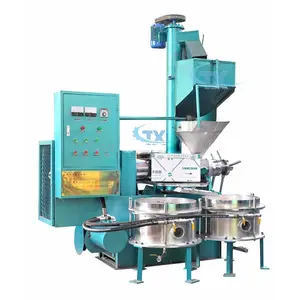Popular in your industry






































































Related Searches:





















































































































































Top categories
About extracting oil nuts
Extracting oil nuts is a fundamental practice for obtaining oils used in various applications. The process involves pressing or grinding nuts to release their oil content. The extracted oil serves culinary, cosmetic, and industrial purposes. The oil is rich in essential fatty acids, making it a valuable ingredient in cooking. The oil also has emollient properties, making it a common component in skincare and hair care products. The industrial application of oil lies in the production of biofuels. The oil extraction process can vary depending on the nut type and desired oil quality.
Extracting oil from nuts
Extracting oil from nuts involves several steps, starting with the selection and preparation of nuts. The nuts are cleaned to remove any impurities and then dried to reduce moisture content. Drying is crucial, as excess moisture can lead to rancidity during storage. The next step involves cracking the nuts to expose the oil-rich kernels.
The cracked nuts are then subjected to a pressing or grinding method to extract the oil. The pressing method involves applying mechanical pressure to the nuts to squeeze out the oil. This can be done using a walnut oil press for extracting oil from walnuts, a hazelnut oil press for extracting oil from hazelnuts, or other specific presses for different types of nuts. The grinding method, on the other hand, uses a grinding mill to crush the nuts into a paste, which is then further processed to separate the oil.
The extracted oil is then typically subjected to a refining process, which may involve filtering, settling, and sometimes additional processing steps to remove impurities and improve the oil's quality. The filtered oil is then ready for packaging and distribution. The byproducts of the oil extraction process, such as nut meal or cake, are often used in animal feed or as fertilizer.
The types of oil extracted from nuts
The types of oil extracted from nuts are diverse and offer a range of flavors and nutritional profiles. Some common examples of nut oils include walnut oil, hazelnut oil, almond oil, and macadamia nut oil. Each type of oil has its unique characteristics, making it suitable for various culinary and cosmetic applications. For example, extracting oil from peanuts yields peanut oil, which is known for its high smoke point, making it ideal for frying. The oil extracted from walnuts is prized for its rich, nutty flavor and is often used in salad dressings and baking. Hazelnut oil, with its distinctively sweet and aromatic taste, is a popular ingredient in desserts and confections.
Applications of nuts extracted oil
Nut oils find applications across different industries and are valued for their unique characteristics. In the culinary world, these oils are used for their distinct flavors and nutritional benefits. For example, walnut oil is popular in salad dressings and as a finishing oil to add a nutty flavor to dishes. Hazelnut oil is a common ingredient in baking and confectionery for its rich taste. Almond oil is versatile, used in both savory and sweet dishes. Extracting oil nuts like macadamia nut oil is appreciated for its buttery flavor and is used in cooking and as a salad oil.
Beyond the kitchen, nut oils find applications in the cosmetic industry for their skin-nourishing properties. These oils are used in skincare products for their moisturizing and emollient qualities. In hair care, they can add shine and manageability. The industrial application of nut oils includes their use in the production of biofuels, where their high fat content makes them a viable renewable energy source. Additionally, nut oils have traditional and medicinal uses in some cultures, where they are valued for their potential health benefits.










































